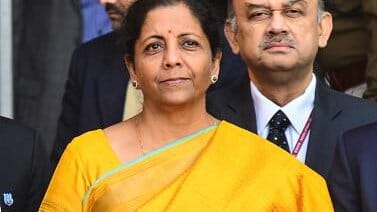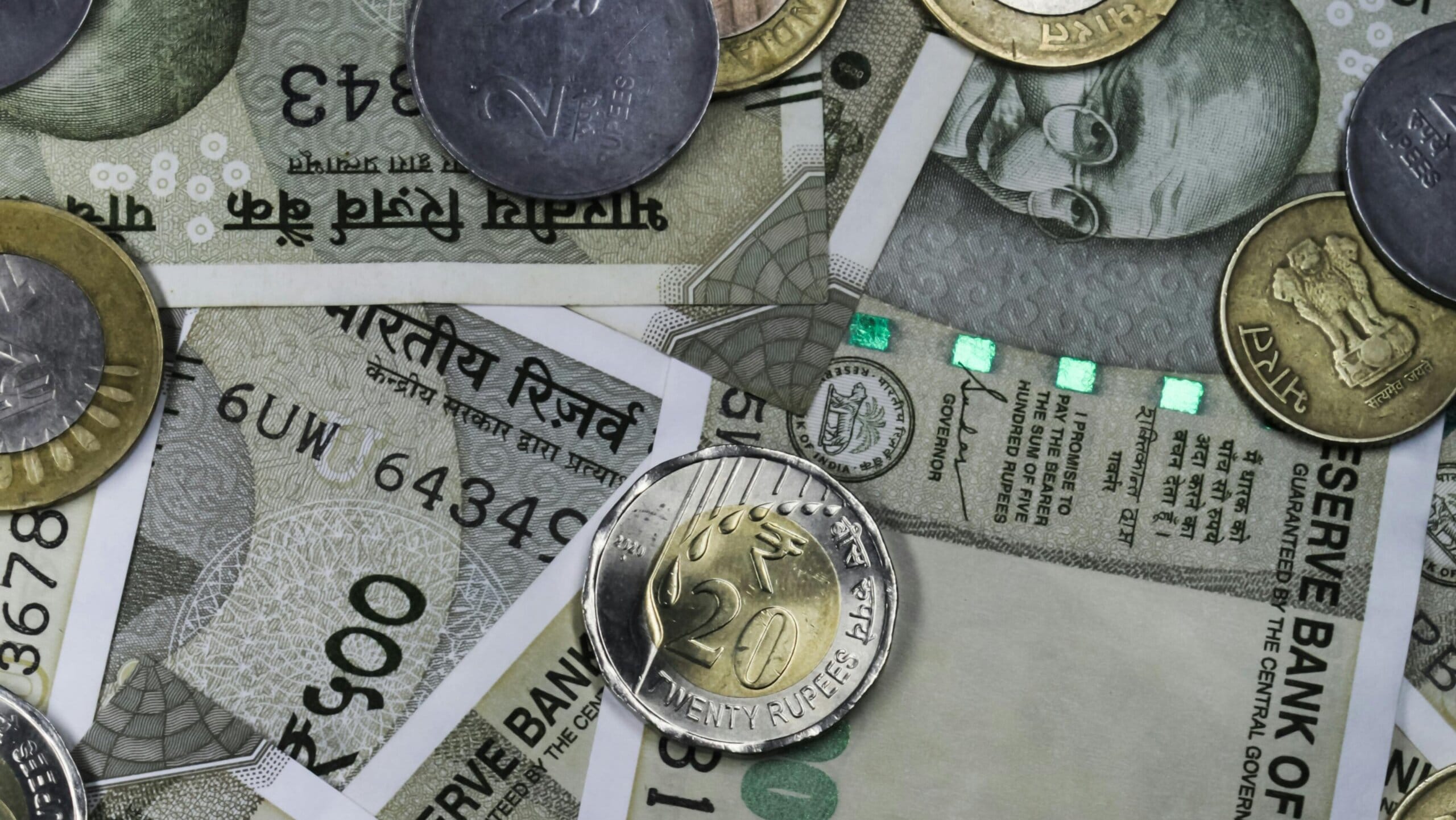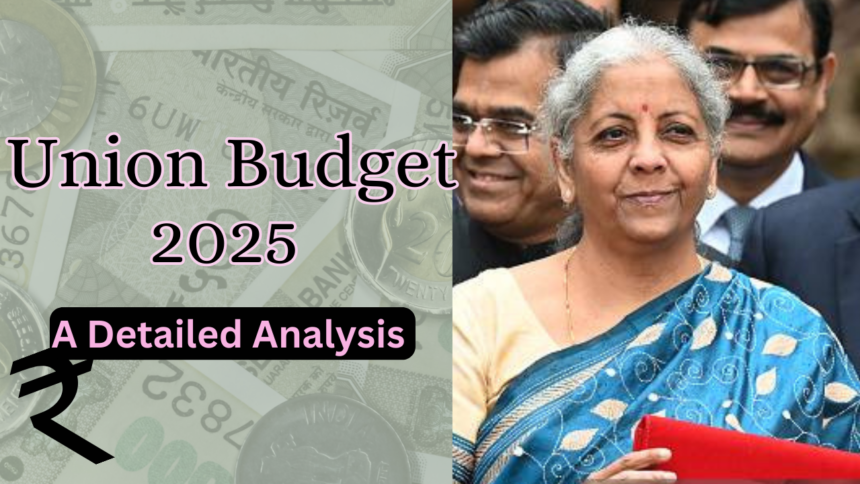On February 1, 2025, India’s Finance Minister, Nirmala Sitharaman, unveiled the Union Budget for fiscal year 2025-26.
This budget aims to boost economic development, provide relief to the middle class, and strengthen important sectors like as agriculture and infrastructure.
The following is a full breakdown of the budget’s main components:
Income tax reforms
Individual taxpayers will receive substantial relief, which is a key focus of the 2025 budget:
income tax exemption thresholds: The income tax exemption thresholds increased from ₹700,000 to ₹1.28 million (roughly $14,800).
This initiative intends to increase the middle class’s discretionary income, promoting consumption and savings.
Revised Tax Rates: The budget lowers tax rates for incomes beyond the new exemption level, substantially reducing the tax burden on people.
The government expects greater economic activity to counterbalance the yearly tax loss of around ₹1 trillion ($11.6 billion) caused by these modifications.

Economic Growth Projection
According to the Economic Survey that preceded the budget, India’s GDP growth would range between 6.3% and 6.8% in fiscal year 2025-26.
This represents a slowdown in comparison to prior years, owing to reasons such as poor urban demand, slow private investment, and high food inflation, all of which have an impact on disposable earnings.
Fiscal Deficit and borrowing
The administration plans to lower the budget deficit to 4.4% of GDP in the next fiscal year.
Plans to cover the shortfall include borrowing ₹14.82 trillion.
This method strikes a compromise between budgetary caution and the need to support economic efforts.
Agriculture and Rural development
Recognizing agriculture’s essential role in the Indian economy, the budget highlights various initiatives:
The National Mission for Crop Productivity: It is a six-year initiative aimed in increasing pulse and cotton output and reducing reliance on imports.
This involves governmental entities buying pulses at fixed rates to help farmers.
Subsidized financing for Farmers: The budget increases the subsidized farm loan cap, giving farmers more access to cheap financing.
In addition, a new urea factory will be built to assure the availability of vital fertilizers.
The budget for the Mahatma Gandhi National Rural Employment Guarantee Act (MGNREGA) remains stable.
At ₹860 billion, demonstrating the government’s dedication to creating job opportunities in rural regions.
Infrastructure and Industrial Development
The budget emphasizes infrastructure and industrial growth:
The government plans to invest ₹11.21 lakh crore on infrastructure to boost economic activity.
Ease of Doing Business: Measures include forming a high-level committee to oversee regulatory reforms.
Also developing an investment friendliness index to encourage private investment and build a business-friendly environment.
Social Welfare and Inclusion
The budget includes numerous projects focused at social welfare and inclusion:
Formalization of Gig Economy Workers: Plans are in place to formalize gig economy workers.
The aim is to give them better access to healthcare and social programs.
Support for Women and Youth: Specific initiatives for women and youth are introduced.
Which includes an emphasis on skill development, entrepreneurship, and job prospects.
Energy and sustainability
To encourage sustainable energy, the budget gives cash for the development of nuclear power.
Nuclear Energy Mission: The government has committed a considerable investment to reach 100 GW of nuclear power by 2047.
That is demonstrating its commitment to diversifying energy sources and lowering carbon emissions.
Corporate sector impacts
The budget provisions have diverse effects across different sectors:
Beneficiaries: Tax cuts are projected to enhance consumer spending.
Which will assist the fast-moving consumer goods (FMCG) and automobile industries.
Companies such as Hindustan Unilever, Nestle, Maruti Suzuki, and Hero MotoCorp have already had strong market reactions.
Challenges: Insurance businesses may encounter difficulties if rising tax rates limit the appeal of tax-saving insurance products.
Furthermore, the infrastructure sector suffered a decline due to a minor increase in capital expenditure.

Opposition and critique
Opposition parties have criticized the budget, claiming that it fails to sufficiently address concerns such as stagnating real wages.
There is a lack of buoyancy in mass spending, and slow private investment.
They also express anxiety about the complicated Goods and Services Tax (GST) regime.
Health and Education
Healthcare initiatives
Increased Budget Allocation:
The government has increased the healthcare budget by 12% in order to strengthen public healthcare facilities and prepare for pandemics.
Ayushman Bharat Expansion:
The flagship health insurance system has expanded to include additional beneficiaries, notably seniors.
Medical Research and AI in Healthcare:
Investing in AI-powered diagnostics and research centers are recommended.
As a way to enhance illness identification and treatment.
Education reforms
Higher Education Boost:
The budget includes more cash to upgrade government institutions, improve research facilities, and increase vocational training programs.
EdTech and Digital Learning:
A unique fund for digital learning projects are established to help bridge the educational gap in rural areas.
Technology and Digital India
Artificial Intelligence and startups
AI and Robotics Development:
The budget contains an incentive package to promote AI-powered companies and digital transformation across industries.
Cybersecurity Investments:
A new project seeks to boost cybersecurity infrastructure and combat digital fraud.
5G and digital connectivity
Rural 5G Expansion:
A considerable chunk of the budget are set aside to extend 5G networks to rural India.
Hence enhancing digital accessibility and e-governance.
Defence and National security
Increased Defense Budget:
Defense expenditure is anticipated to increase by 15%.
with a focus on indigenous defense equipment manufacture.
Border Infrastructure:
Funds are provided to improve national security and connection in remote areas.
Global Economic Strategy and Foreign Investment
FDI Reforms:
To attract more global investors, the budget relaxes foreign direct investment (FDI) requirements.
Trade Expansion:
New trade agreements and export incentives aim to strengthen India’s standing in the global market.
Conclusion
The Union Budget 2025-26 lays out a comprehensive strategy to boost economic development.
It provides tax relief to the middle class, and improve important sectors including agriculture and infrastructure.
While it includes important changes and allocations, its success is dependent on efficient execution and the capacity to handle global economic uncertainty.
Also check: Market trends in 2025









